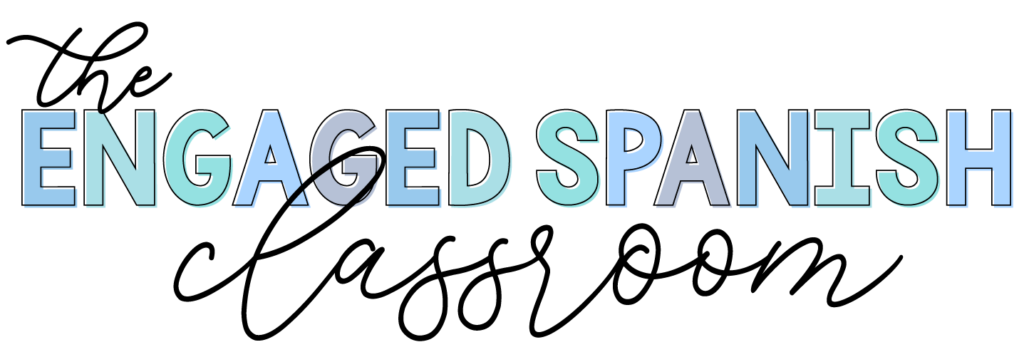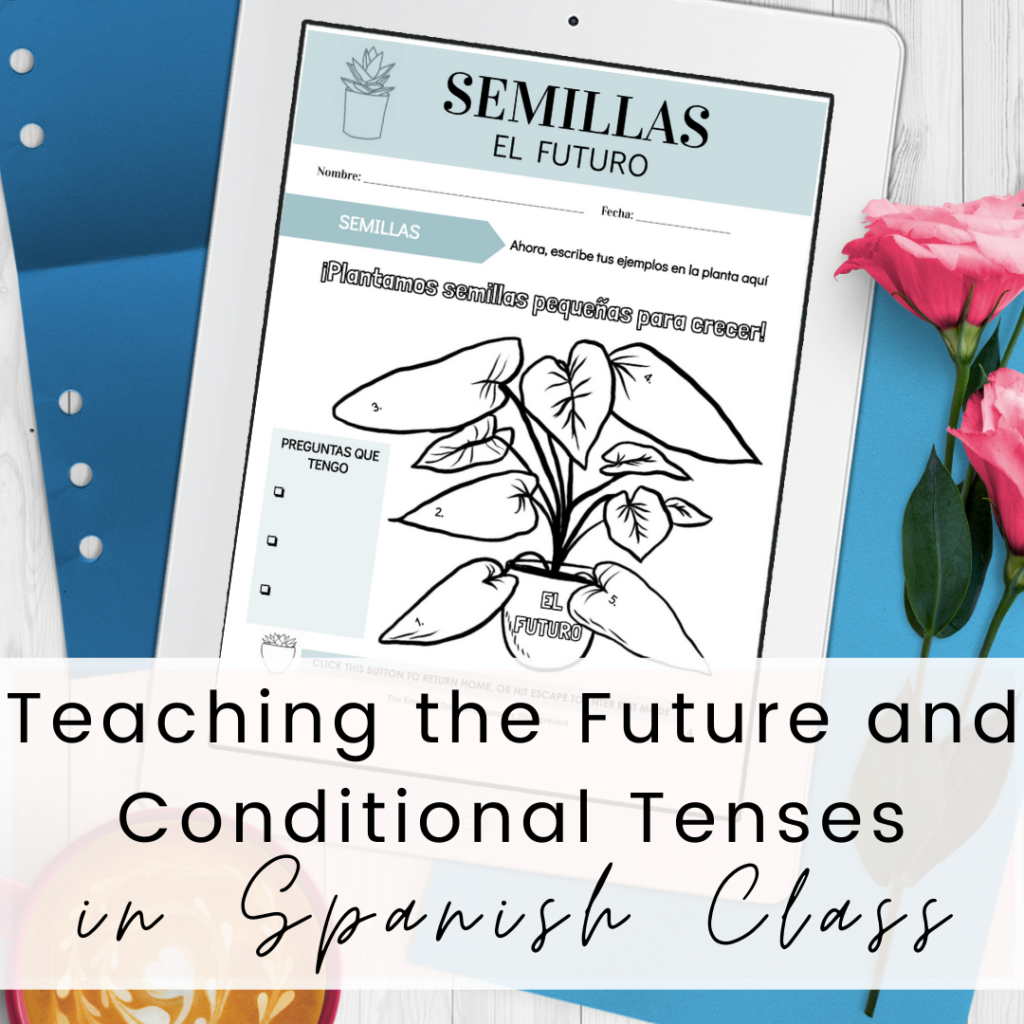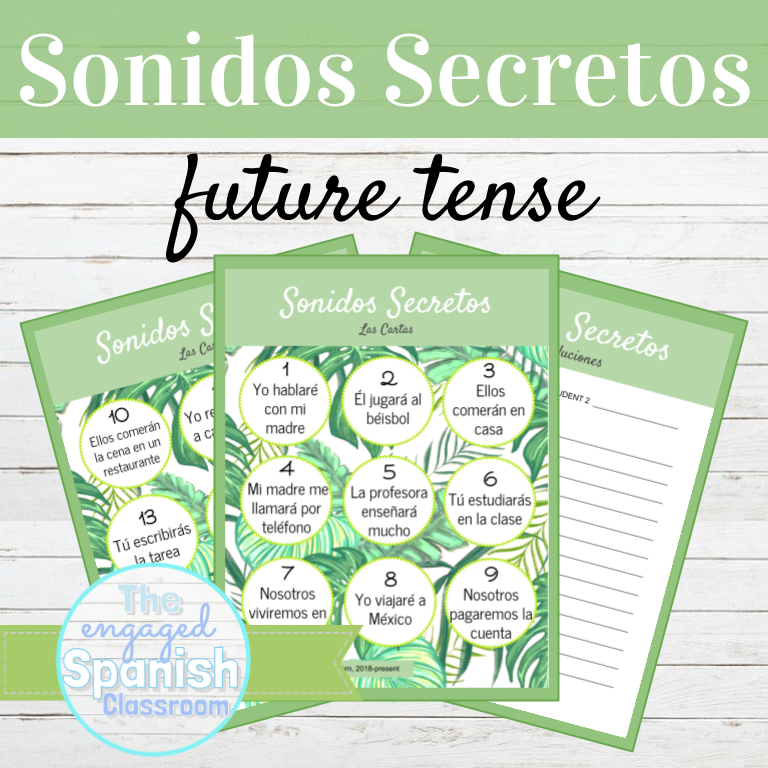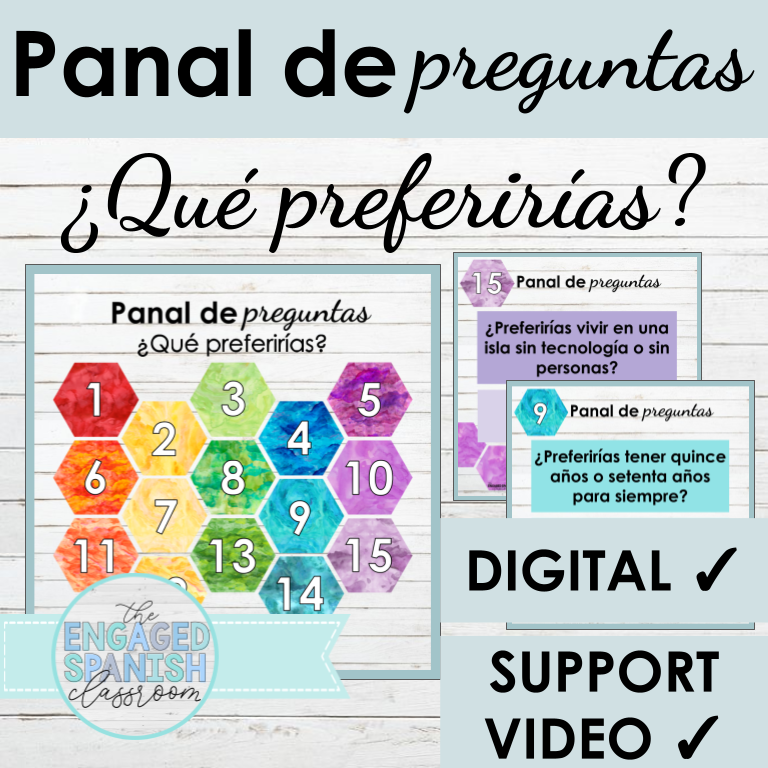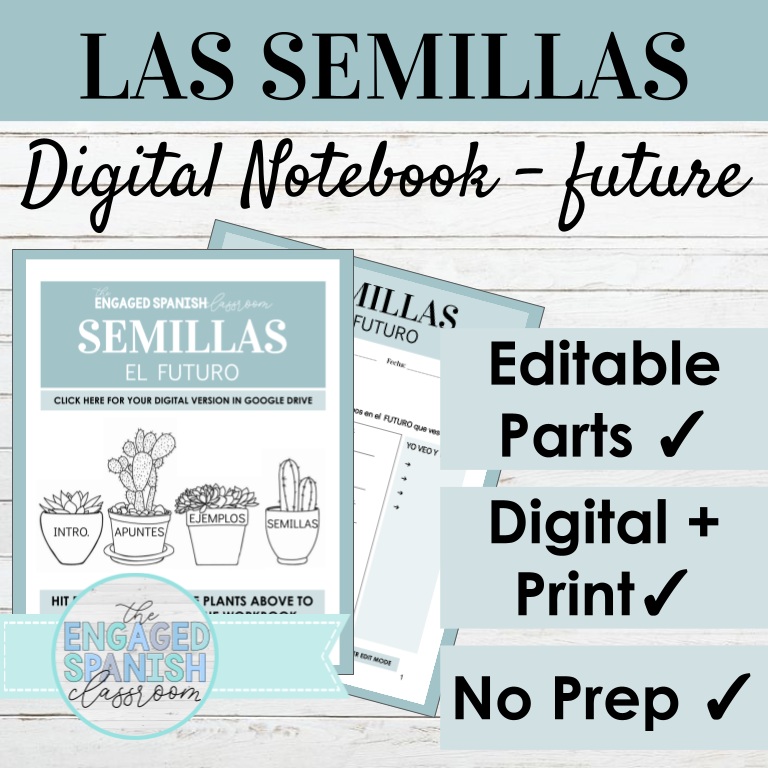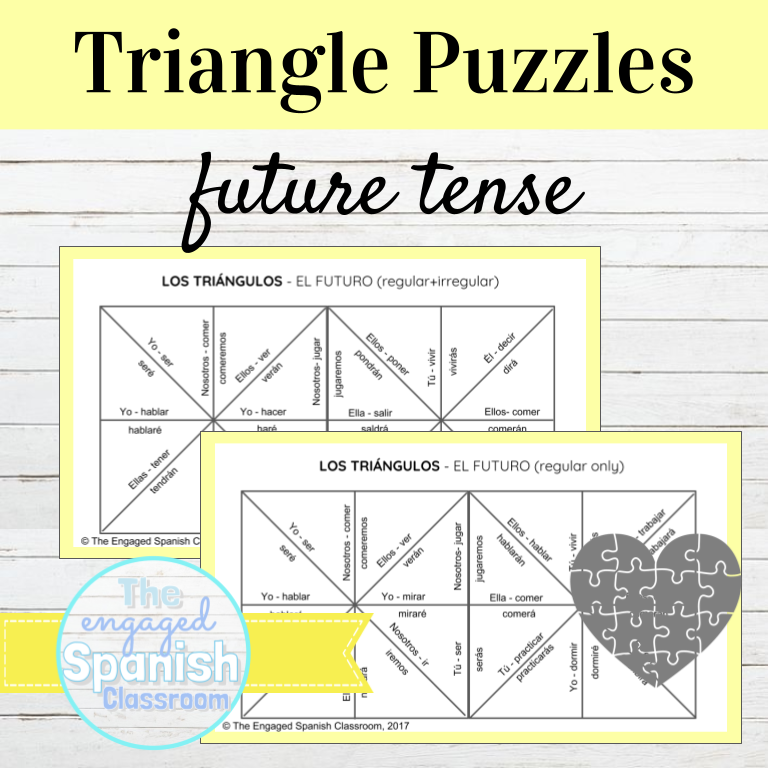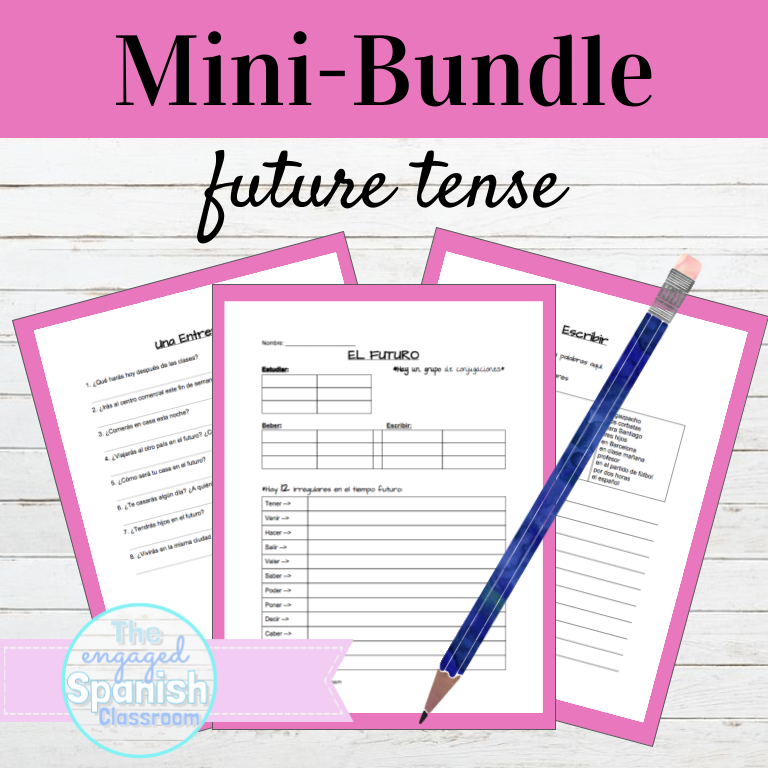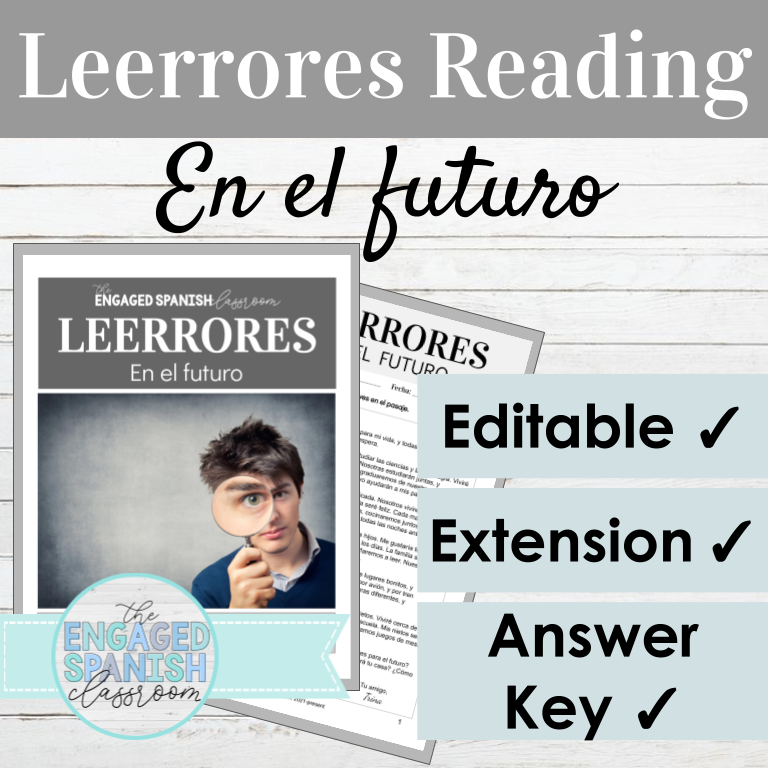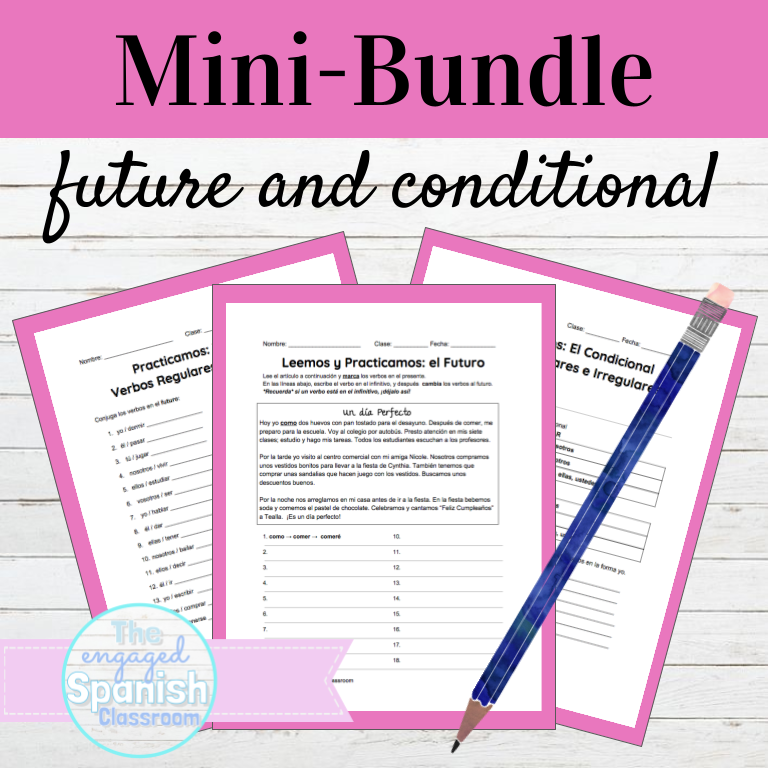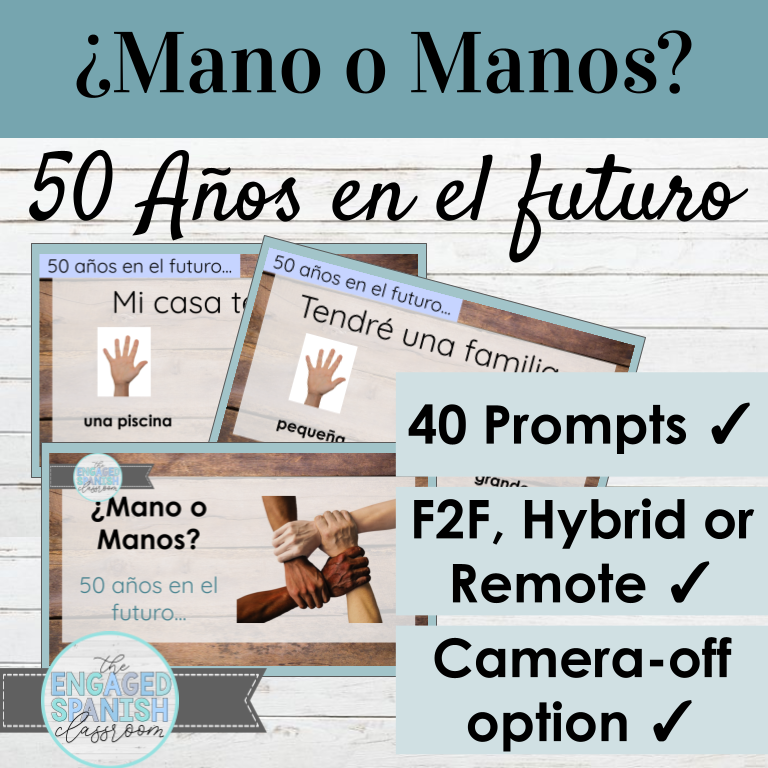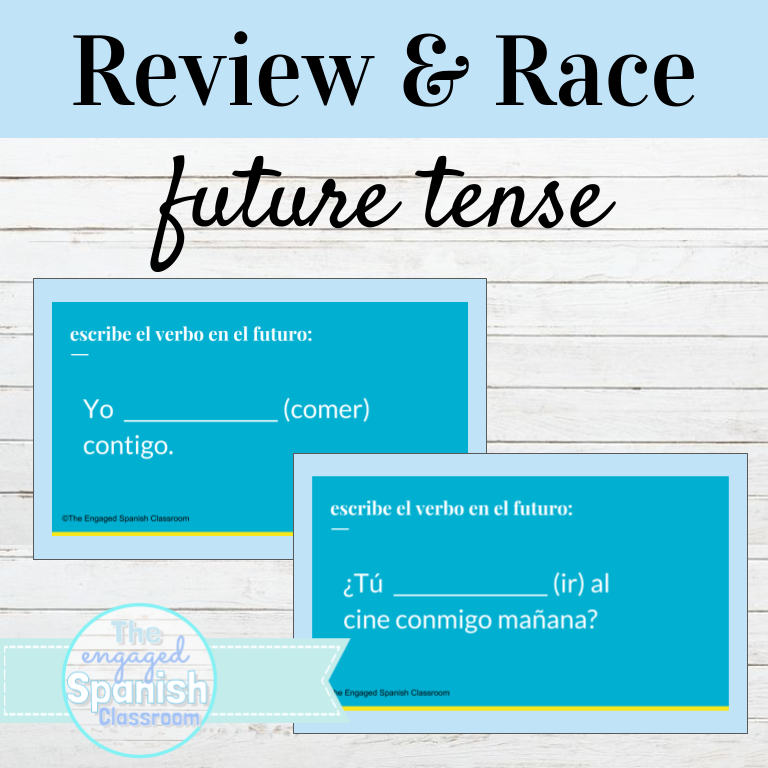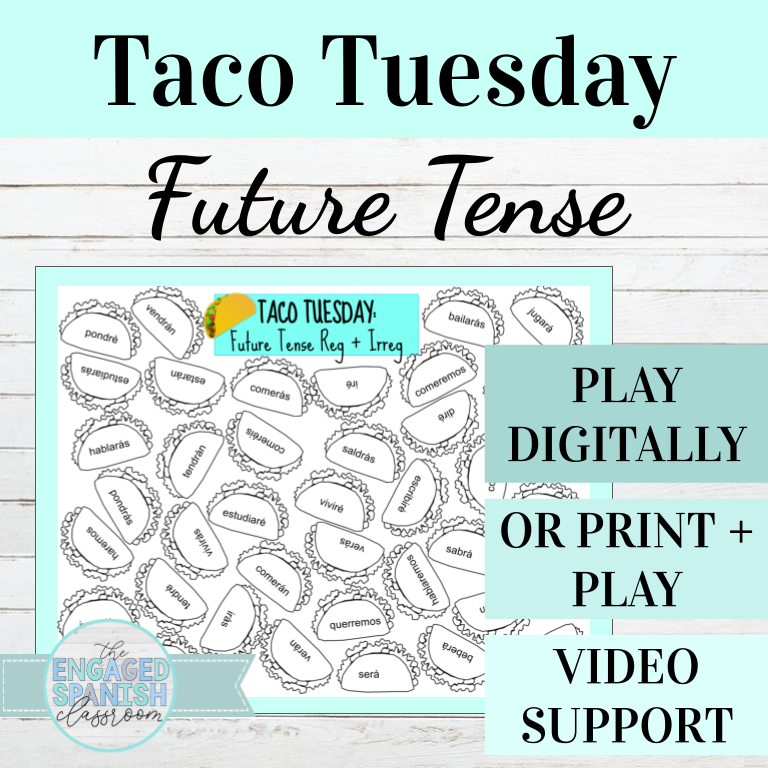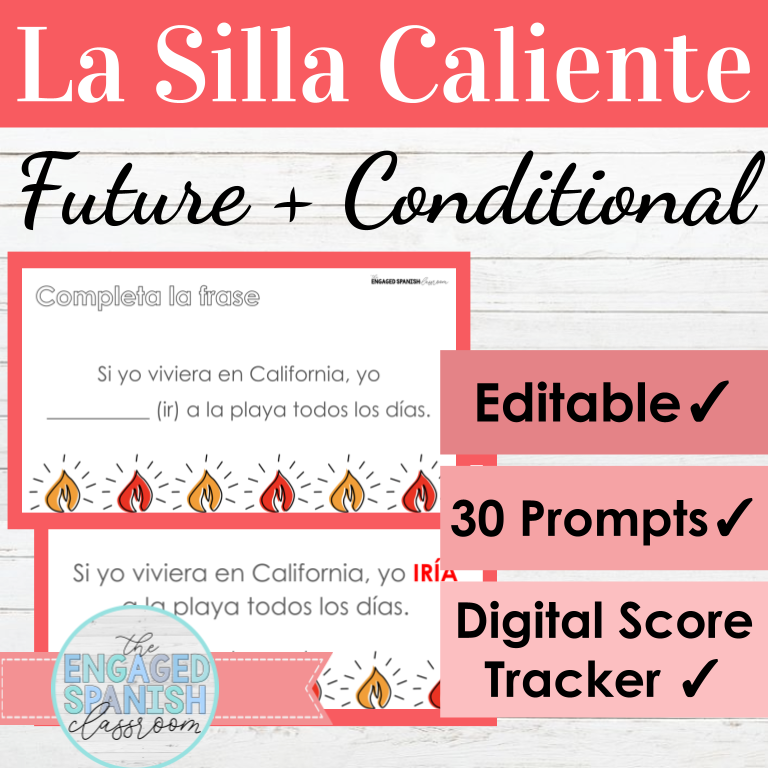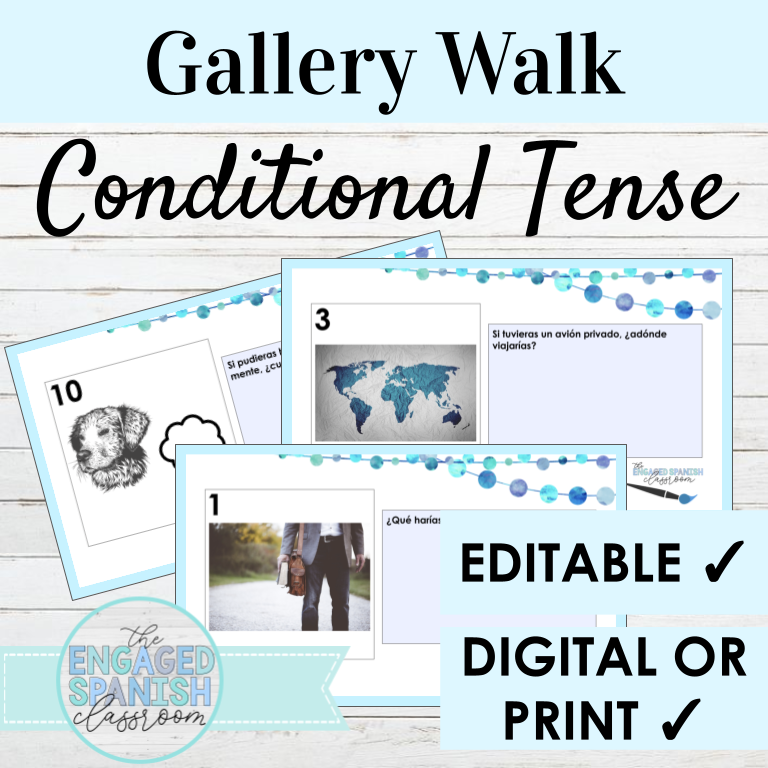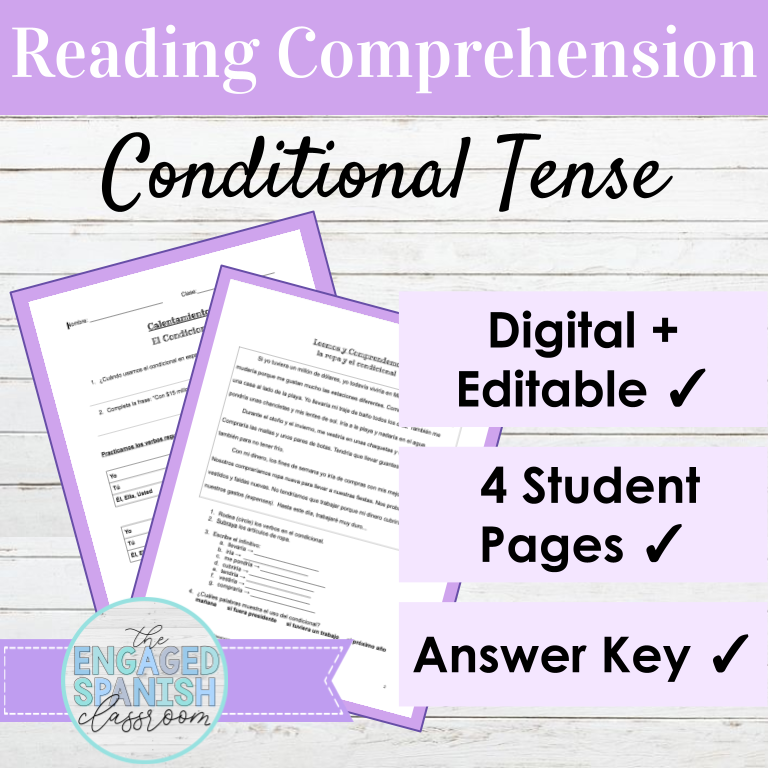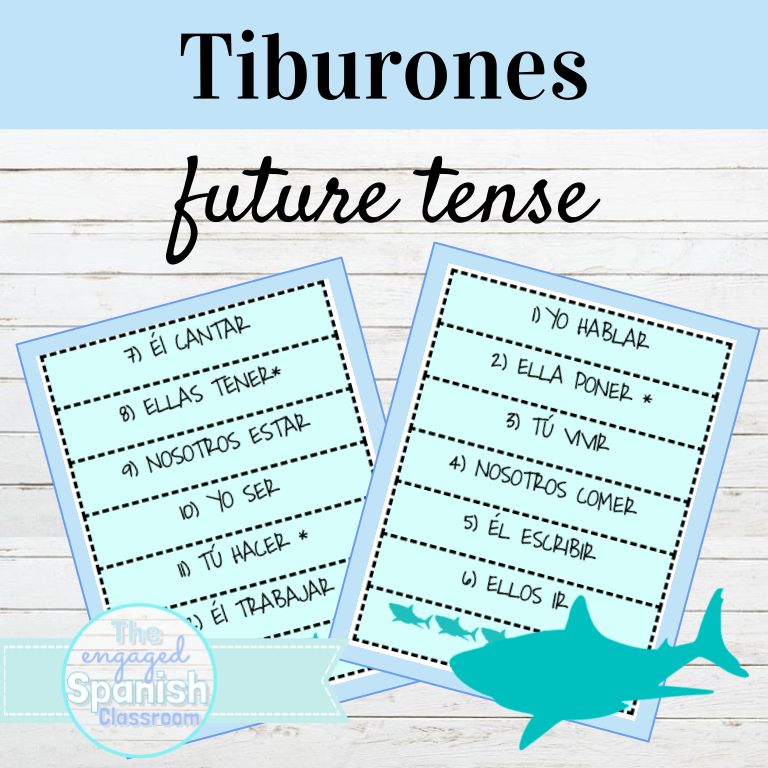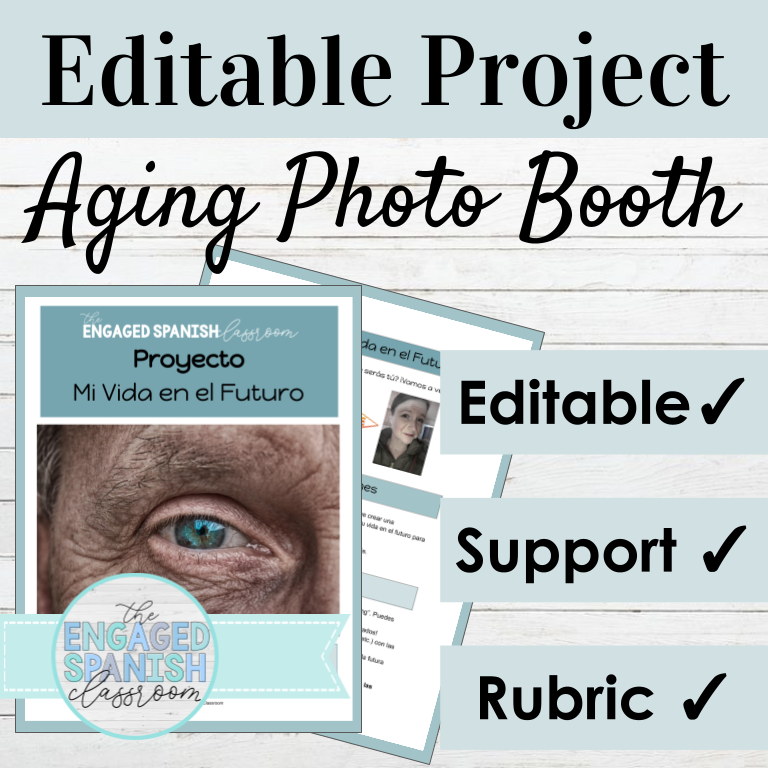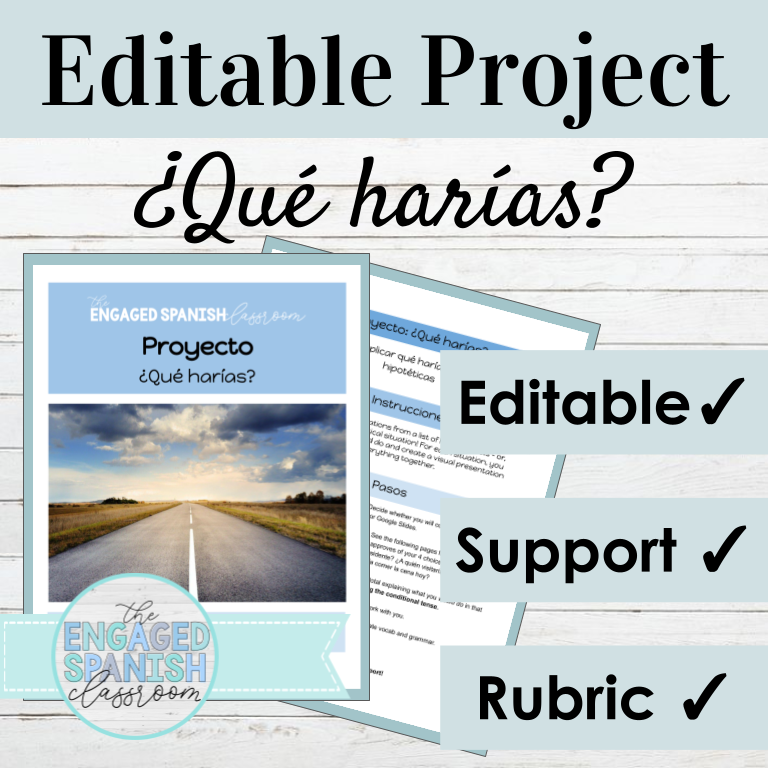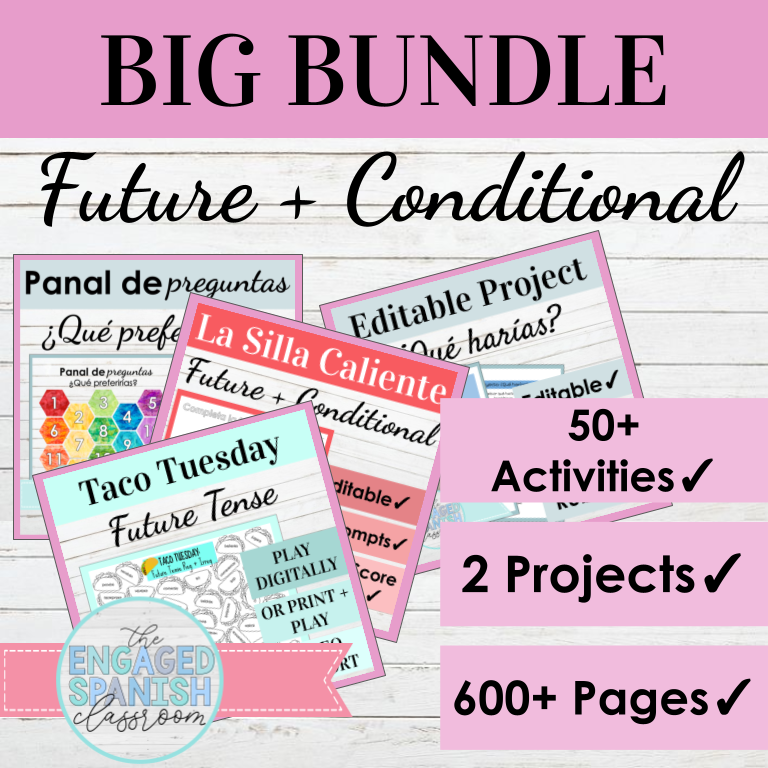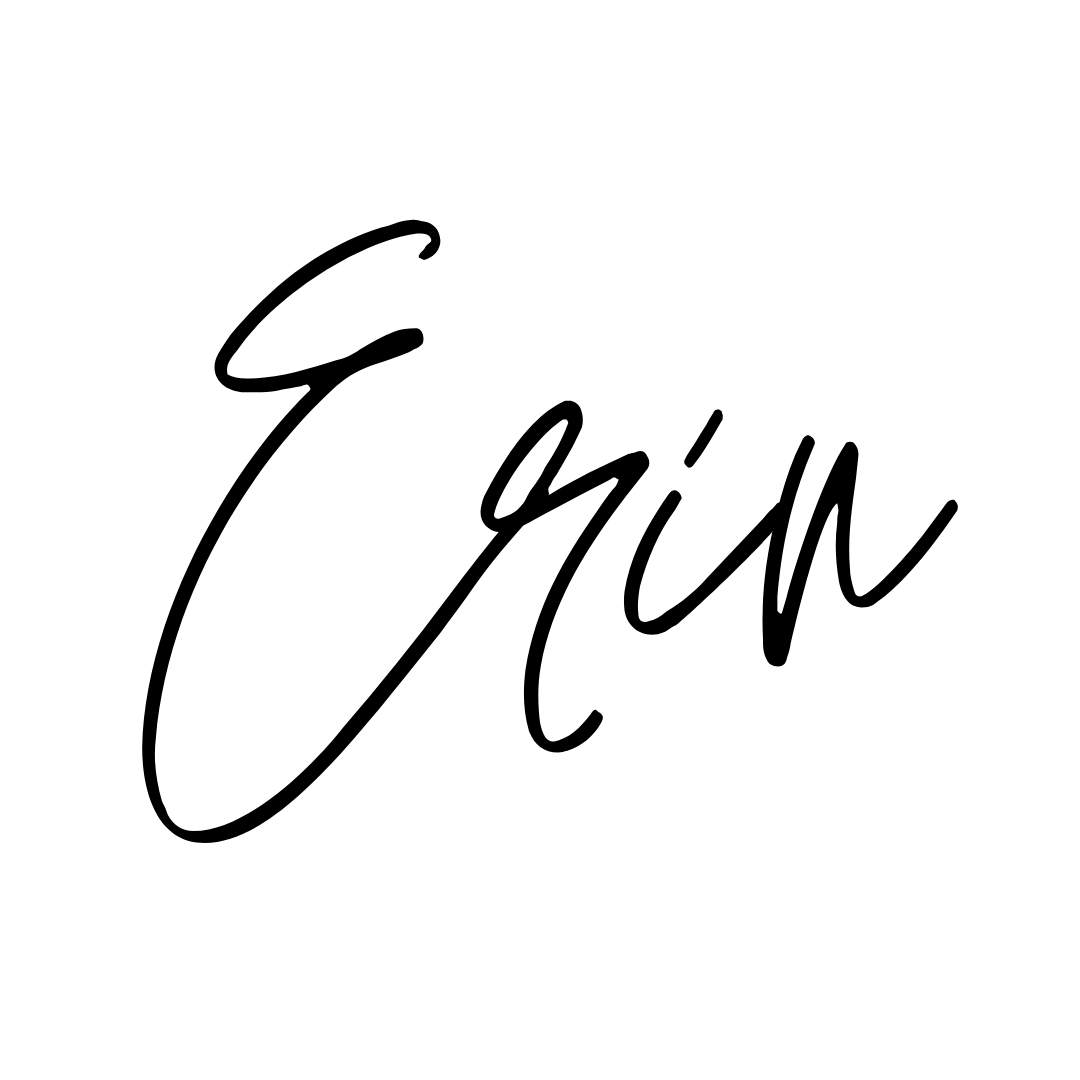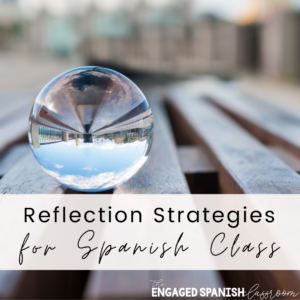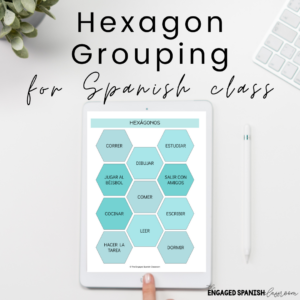The future and conditional tense units are some of my favorites in Spanish 3! At this point, my students have been exposed to a *lot* of the present, preterite, and imperfect tenses. They’ve learned how to talk about their past and their childhood. After the preterite, the imperfect tense usually seems a bit easier to use, and now enter: the future and the conditional. I LOVE these tenses, and my students do too!
We love setting goals for the future, and we love class discussions of ¿Qué preferirías? ¿Preferirías vivir en una isla sin personas, o sin technología? ¿Por qué? (The questions embedded in this activity are super fun year after year!)
I give two projects during these units, and my students always rock them both. After getting through the heavier parts of our curriculum, these units are fun, laid back, and engaging!
In this post you’ll find my favorite resources that I use year after year. You’ll also get access to various free resources to try! Happy planning!
Goals for EVERY SPANISH CLASS level
In Spanish 3 it is easy to forget that we still need to build our students’ confidence. I do my best to show that making mistakes is not only OK but actually a sign of strength and progress. In my teaching of all levels I do my best to provide lessons, activities, and assessments that offer the following:
- various opportunities for input
- movement and/or hands-on options
- consistent opportunities for student choice
- a balance of independent work and group work / collaboration
- structured and supported opportunities for low-pressure output
- engaging games / fun 🙂 that are still language-focused
- clear expectations
- varied and purposeful assessment styles
- assessment options that offer student choice when possible
My favorite resources for the future and conditional tenses in Spanish class
Read further to see how I introduce, practice, and assess (and to snag some free reading materials), but I wanted to share my two favorite activities in case you need a quick pick-me-up for your classes! The activities below are my two most reliable activities over the past few years.
Sonidos Secretos is super fun, and hearing students make guesses in Spanish is INVIGORATING for my teacher soul. My students beg for this one almost as much as they ask for La Silla Caliente!
As for Panal de Preguntas, this year I decided to use it as a whole-class discussion instead of the digital partner game we usually play. I had students volunteer to choose a number; that student read the question aloud, and the entire class responded to the ¿Qué preferirías? question by holding up one finger or two (to represent the first or second option, accordingly.) We completed this as a warm-up all week, answering a few questions each day! I kept track of which questions we had answered by using the digital game pieces on the first page. Typically, it can be used as a partner game where students type directly into the editable document. Have fun!!
Each activity above is available in both the future and conditional tenses. I also have editable templates of both of these activities in case you’d like to design your own and use them with your classes again and again. Now, onto my full units!
Introducing the unit
I try to start each unit with various styles of INPUT that prove to students that A ) they understand more than they think and B ) they CAN learn new things! I love hearing, “Wow, I actually understand this!”
You *don’t* need to start new units the way our teachers used to, with notes, lecturing, and explaining from the start. You CAN give students the power to explore the language and make discoveries on their own.
One way I like to do this is with simple readings like this free download for the future tense. The reading is simple enough that students can work independently or in small groups to discover patterns and build confidence in their abilities. We then use their discoveries to guide our “notes” for the unit, when we come back to review as a whole class. An alternative activity that follows this same style, but is far more comprehensive, is my editable digital Semillas grammar notebooks.
I also love using puzzles and other hands-on activities right from the start of any unit.
This type of activity shows students that they can understand and explore the language based on their prior knowledge!
They know more than they think they do 🙂
For a more traditional approach, I use these future tense guided notes and practice pages.
I often offer these as extra practice for my students that enjoy traditional note-taking. They’re great for review after we have explored the tense in a more natural way.
Leerrores is an activity that offers a LOT of input and helps build student confidence even at the start of a unit! Students work together to find errors, and it really makes them feel like language experts!
For most activities you see above, I have an equivalent for the conditional tense. If you liked the free intro reading for the future tense, you’ll love this free download for the conditional as well! Have fun!
Supported practice For the future and conditional tenses
After introducing these tenses, (we utilize them separately but they fall close to one another in our curriculum) I always aim to offer various styles of supported practice for my students to work on their own or in small groups.
I use groups as much as possible; my students sit in groups of 4-5, so we are naturally in groups every day. The practice at this stage is still very input-centered, or is very structured and supported output. My goal is still to build confidence and allow my students to explore the language.
These are three examples that are very low-pressure for students, and offer various supports and differentiation opportunities.
Last year one of my goals was to offer more input for my students, both written and oral. These reading and review activities offer plenty of written input for my students, and help my students build confidence in their interpretive skills. Again, the reaction is usually “I actually understood that!!!”
We usually follow this activity up with these task cards for the future and conditional tenses.
¿Mano o Manos? is an activity that offers a LOT of input in a very low pressure setting!
My students love these activities because they can participate without feeling like all eyes are on them 🙂 It’s a great way to build confidence in a new unit!
The same goes for building student confidence with word races– I love using small white boards for these, so I can see how students are doing individually. I am able to reflect – How much review do we need? Does the class seem fairly balanced in their confidence? etc.
I also have a version available for the conditional tense.
review opportunities
This section is filled with my favorite things. My goals during review are to make sure my students are having fun, to get them interacting with the language in a way that is low-pressure and communication-focused, and to make sure every activity is valuable and engaging.
Taco Tuesday is a favorite every year. Best played in pairs or groups of 3 – you can read the tutorial here for in person play and here for digital play. Grab a free version to try here!
La Silla Caliente is my most competitive game – students love it! A new editable format as well as a digital score tracker designed by me make gameplay even easier on the teacher. Read the tutorial here and grab a free version for the present tense here!
Gallery Walks are great for motivating your students to communicate and construct output in the TL, while still providing a low pressure and supportive setting. You can read more about how I use them here!
These reading packets are my favorite way to move from input to structured output. They are also a great way to balance group work with independent work. We often move through the sections, switching up our work settings throughout.
Speaking fun FOR THE FUTURE AND CONDITIONAL IN SPANISH CLASS
Over the years, I have had no trouble offering a variety of opportunities for my students to practice their reading, writing, and listening skills. I am always confident my students get enough practice and exposure in these areas. Where I always double check myself to make sure I am offering enough? SPEAKING. So I found myself trying to develop various speaking activities with differing approaches and goals.
These are a few go-to speaking activities for this unit that always keep my students engaged and communicating in the target language. If you’d like to read more about my go-to speaking activities, check out this post before you leave!
Tiburones is a great way to get students speaking in small groups. Easy to differentiate, and play for any amount of time! 🙂
Sonidos Secretos is one of the most fun activities I have – and the fact that it’s for SPEAKING blows my mind! The room is always filled with giggles during this one – learn more from my tutorial here.
I like to offer Llama Mía as a stations activity or as a student-choice option during review. It’s another great low-pressure and adaptable option to promote speaking in the target language.
Café Charla is the perfect speaking option for fast finishers, or for the last 5 minutes of class if you need to conference with a few students but want to make sure your other students are on task.
One last speaking activity I always incorporate is Citas Cortas. My students *always* write on their reflections and goal setting pages that while they get nervous before this activity, they find it the most beneficial!
Assessment options
I recently adjusted my syllabus and grading practices to be more proficiency-focused, and I am never looking back! Instead of having grades that seem meaningless in language learning (40% quizzes, 40% tests, 10% homework and 10% participation,) my department has supported a move toward a more proficiency based approach. My students’ grades are now broken down as follows: 30% interpretive, 30% interpersonal, 30% presentational, and 10% study habits. (I personally stopped giving homework last year, and I don’t grade very much classwork, so the 10% study habits is heavily based on my students’ own reflections on their participation. You can read more about that approach here, at the bottom of the post.)
When I was a new teacher, I would give 4 page quizzes that included listening, reading, writing, and speaking. Honestly, I gave quizzes like this until very recently. After changing my approach to grading, I have worked to break it down for my students and allow them to practice one skill at a time.
With this new approach, I am forced to be more mindful about the why behind each of my assessments. I also have to work to be more balanced – it has made me offer more interpretive assessments, which my students of course LOVE. In general, I have moved away from the more traditional quizzes, and focus more on the styles below.
This is one of the projects my students love most! They get to use an app with an aging filter to “age” themselves, and describe their future lives. They dream about what their family, home, and overall life will look like! Students always impress me with this one!
In this project, students choose 4 “What if” situations, and present detailed opinions (5+ phrases) on each using the conditional tense. For example,: Si yo fuera un animal, yo sería un perro. Yo correría con mis amigos, y dormiría mucho 🙂
If you’d like to see a wider variety of my resources for these tenses all in one place, look no further! This bundle has notes, practice, games, assessments, projects, and writing prompts!
All of my projects are editable, and rubrics and drafting space are included for students. These can be completed digitally or on paper!
Again, these approaches are not meant to be used as a one-style-covers-all. They are appropriate with a balance of assessment styles, and some will work better with your teaching style than others! I encourage you to continue to think outside the box when it comes to “assessment,” and offer a variety of options for your students. They may surprise you with their strengths!
Thank you for reading!
I hope you are leaving with a few new ideas to try! Maybe you also found some inspiration to evaluate WHY you choose the activities you do, and how they (along with your grading and assessments) are purposeful!
If you have any questions or would like to see a post for a specific unit, please feel free to email me at erin@theengagedspanishclassroom.com! I’d love to hear from you.


